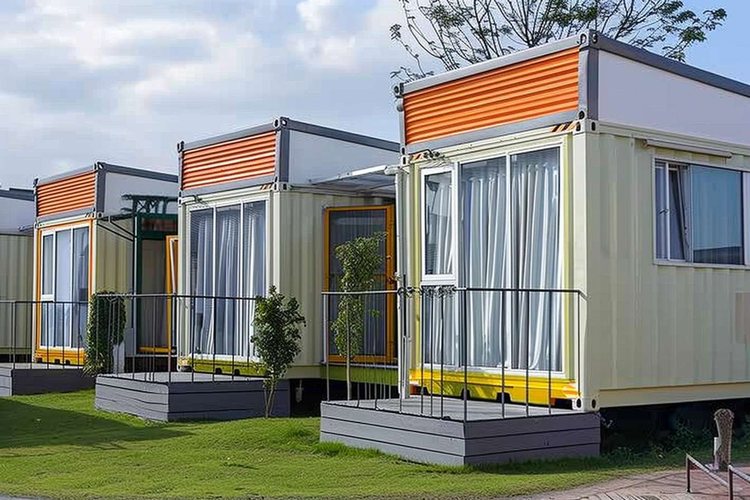Revolutionizing Senior Housing Compact Prefab Bungalows for Modern Living
The housing landscape for seniors is undergoing a remarkable transformation with the emergence of compact prefabricated bungalows. These innovative dwellings combine accessibility, energy efficiency, and modern design to address the unique needs of older adults seeking independence without compromise. As demographic shifts continue across Canada and the UK, these purpose-built homes are gaining traction as practical alternatives to traditional senior living arrangements.

The concept of senior housing has evolved significantly in recent years, moving away from institutional settings toward solutions that prioritize autonomy, comfort, and quality of life. Prefabricated bungalows represent a forward-thinking approach to addressing the housing needs of an aging population. These compact, efficiently designed homes offer single-level living, accessibility features, and energy-efficient technologies that make them particularly well-suited for seniors looking to downsize while maintaining independence and comfort in their golden years.
How Prefab Bungalows Address Unique Senior Housing Needs
Prefab bungalows for seniors are specifically designed with aging in place as a core principle. The single-story layout eliminates the hazards associated with stairs, while wider doorways and hallways accommodate mobility aids when needed. Many models incorporate universal design elements such as zero-threshold entries, grab bars in bathrooms, and lever-style door handles that benefit residents of all ability levels. The prefabricated construction process allows for customization of these accessibility features during manufacturing, ensuring they’re seamlessly integrated rather than appearing as afterthoughts. This thoughtful approach to design creates homes that can adapt to changing needs over time, potentially extending independent living by many years.
Technological Advances in Modular Senior Homes for 2025
The next generation of modular senior homes, projected for 2025, will incorporate significant technological advancements that enhance both comfort and safety. Smart home systems are being integrated that allow for voice-activated controls of lighting, temperature, and security features. Health monitoring technologies, such as fall detection systems and medication reminders, can be built directly into the home infrastructure. Energy management systems optimize heating and cooling based on occupancy patterns, reducing utility costs while maintaining comfort. Additionally, prefabrication techniques have advanced to allow for more architectural variety and customization without sacrificing the efficiency of factory production. These technological innovations make modular senior homes increasingly attractive options for tech-savvy older adults who value both independence and connectivity.
Innovative Senior Housing Solutions in Canada and the UK
Both Canada and the UK are experiencing significant growth in innovative senior housing developments utilizing prefabricated construction. In Canada, several provinces have implemented programs to support the development of accessory dwelling units (ADUs) using prefab technology, allowing seniors to live independently on family properties. These “garden suites” or “granny flats” provide proximity to family support while maintaining privacy. In the UK, modular housing communities specifically designed for seniors have emerged in several regions, offering community amenities alongside private dwellings. These developments often incorporate shared gardens, community centers, and on-site services that complement the independent living model. Government initiatives in both countries have begun supporting these housing innovations through zoning reforms, grant programs, and research partnerships focused on improving senior living options.
Designing Senior-Friendly Prefab Living Spaces
The interior design of senior-friendly prefab homes balances aesthetic appeal with practical functionality. Open floor plans maximize mobility and create spacious environments despite compact footprints. Strategic placement of windows optimizes natural light, reducing energy consumption while creating uplifting living spaces that combat isolation and depression. Storage solutions are designed at accessible heights, eliminating the need to reach high or bend low. Kitchens feature adjustable-height countertops and appliances selected for ease of use. Bathrooms incorporate curbless showers, comfort-height toilets, and strategically placed grab bars that blend with the overall design aesthetic. Finishes and materials are selected not only for visual appeal but also for practical considerations like slip resistance, durability, and ease of maintenance.
Energy-Efficient Features in Small Prefabricated Homes
Energy efficiency is a significant advantage of modern prefabricated homes, particularly beneficial for seniors on fixed incomes. Factory construction allows for precise installation of high-performance insulation, creating a tight building envelope that minimizes heating and cooling costs. Triple-glazed windows, energy-efficient appliances, and LED lighting further reduce energy consumption. Many prefab manufacturers now offer solar panel integration, heat recovery ventilation systems, and smart thermostats as standard or optional features. These energy-saving technologies not only reduce monthly expenses but also create more comfortable living environments with consistent temperatures and improved air quality. The controlled factory environment also allows for more efficient use of building materials, reducing waste and the overall environmental footprint of construction.
Cost Considerations and Provider Comparison
Understanding the financial aspects of prefabricated senior housing is essential for making informed decisions. The cost of these homes varies depending on size, features, customization, and location.
| Provider | Base Model Size | Starting Price (CAD) | Notable Features |
|---|---|---|---|
| Karoleena Homes | 600-800 sq ft | $180,000 | Energy-efficient design, wheelchair accessibility, smart home features |
| Horizon North | 400-900 sq ft | $150,000 | Customizable floor plans, senior-specific safety features, Canadian climate-optimized |
| Alair Homes | 500-1000 sq ft | $200,000 | High-end finishes, full customization, integrated technology |
| ilke Homes (UK) | 55-70 sq m | £150,000 | Energy-positive options, rapid installation, NHS partnerships |
| Legal & General (UK) | 50-80 sq m | £125,000 | Affordable models, community developments, support services |
Prices, rates, or cost estimates mentioned in this article are based on the latest available information but may change over time. Independent research is advised before making financial decisions.
Beyond the purchase price, potential buyers should consider site preparation, utility connections, permits, and transportation costs. Many providers offer turnkey packages that include these elements, while others price them separately. Long-term cost benefits include reduced energy bills, lower maintenance requirements, and potential tax incentives for energy-efficient homes. Some jurisdictions also offer grants or subsidies specifically for senior housing initiatives, which can significantly reduce upfront costs.
The Future of Prefabricated Senior Housing
The prefabricated housing sector for seniors continues to evolve with promising innovations on the horizon. Manufacturers are exploring biophilic design principles that better connect residents with nature, enhancing wellbeing and cognitive function. Modular expansion capabilities allow homes to grow or contract as needs change, potentially accommodating caregivers or family members when necessary. Community-focused developments are integrating individual prefab units with shared resources, creating supportive environments that combat isolation while preserving independence. As construction technology advances, the aesthetic variety and customization options continue to expand, moving far beyond the cookie-cutter appearance once associated with prefabricated housing. These developments suggest a future where prefabricated senior housing becomes increasingly mainstream, offering dignified, comfortable, and sustainable living options for an aging population seeking to maintain autonomy and quality of life.



